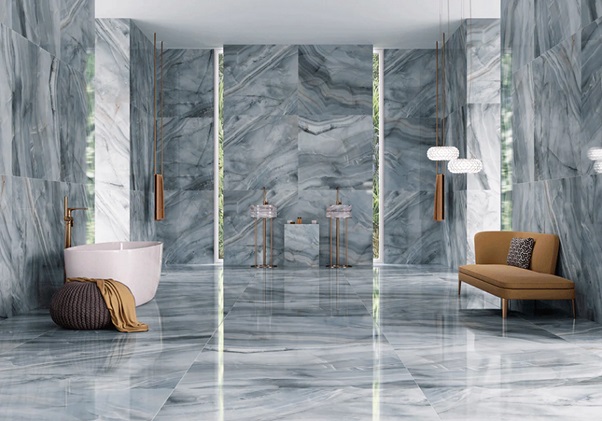All of us are aware that there are a ton of options available and selecting the best one can often seem impossible. Refinishing a room’s flooring involves numerous tasks. Color and design are crucial for everything from selecting the greatest finish to the appropriate material. Making a poor choice now can have a lasting effect on your room’s appearance and functioning.
One such common flooring material that works well in every room of your house- from the kitchen to the living room and from the bathroom to the bedroom- is tile. Modern technology is used in the manufacturing process to create tiles that are low porosity, long-lasting, easy to clean, and require little maintenance- all of which make them a great option for your space.
Everything you should know about the various tile types
The market offers tiles made of a variety of different materials. Before deciding on the material of your choice, carefully weigh the advantages and disadvantages of each option.
Ceramic tiles
Among the most common types of tiles on the market are floor ceramic tiles (กระเบื้องปูพื้น, this is the term in Thai). These tiles come in an extensive range of colors, patterns, sizes, and finishes and they are reasonably priced and long-lasting. Although these tiles can withstand mild to medium use, areas with heavy foot traffic are not recommended for them since they may fracture or get damaged.
Tiles made of vitrified glass
Some of the strongest tiles available are vitrified tiles, which can support the weight of large machinery and considerable foot activity. There exist multiple classifications of vitrified tiles, including full body vitrified tiles featuring a single color throughout the tile, double charge vitrified tiles with two layers of tile, glazed vitrified tiles with a glazed surface, and polished glazed vitrified tiles with a polished surface.
Selecting the appropriate tile size for your space
The way your room looks overall can be greatly influenced by the size of the tile. To guarantee that there is as little tile waste as possible, it is best to base the tile’s size on the space of your room. Larger tiles in a smaller space might lead to a lot of waste, while smaller tiles in a larger space can feel crowded and busy because of the numerous grout lines. To create the illusion of a larger room, select a size that will minimize waste and have few grout lines.
Picking a design
As previously said, a vast array of patterns and colors are offered for tiles. Today’s tiles may mimic and duplicate the look and feel of many different materials, including marble, wood, slate, granite, and other stones, thanks to the quick evolution of printing technology. In addition to these, tiles come in a variety of patterns, including floral, geometric, 3D, and mosaic.
Before finalizing the design, you must take into account the room’s overall concept and color scheme. When choosing, bear in mind your walls, furniture, wall art, and upholstery. You can even combine two distinct patterns, like marble and wood or geometric and floral, to make a pattern on your floor.

